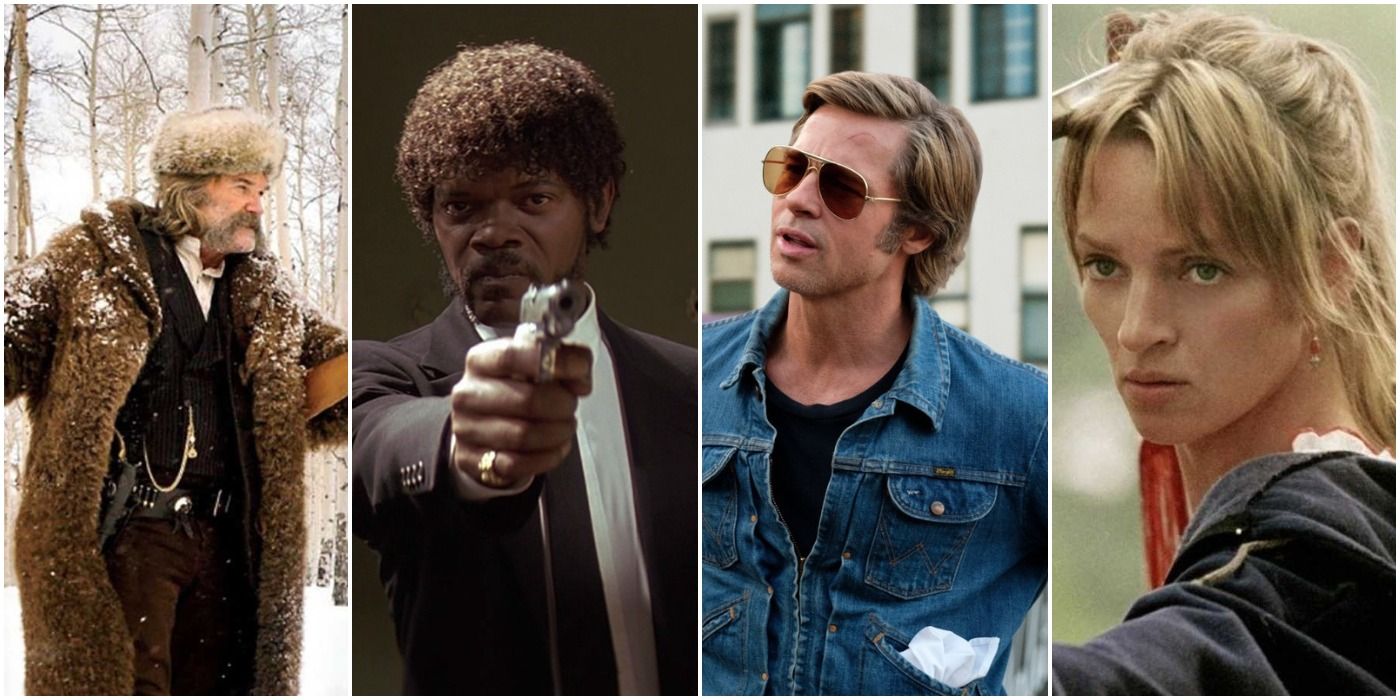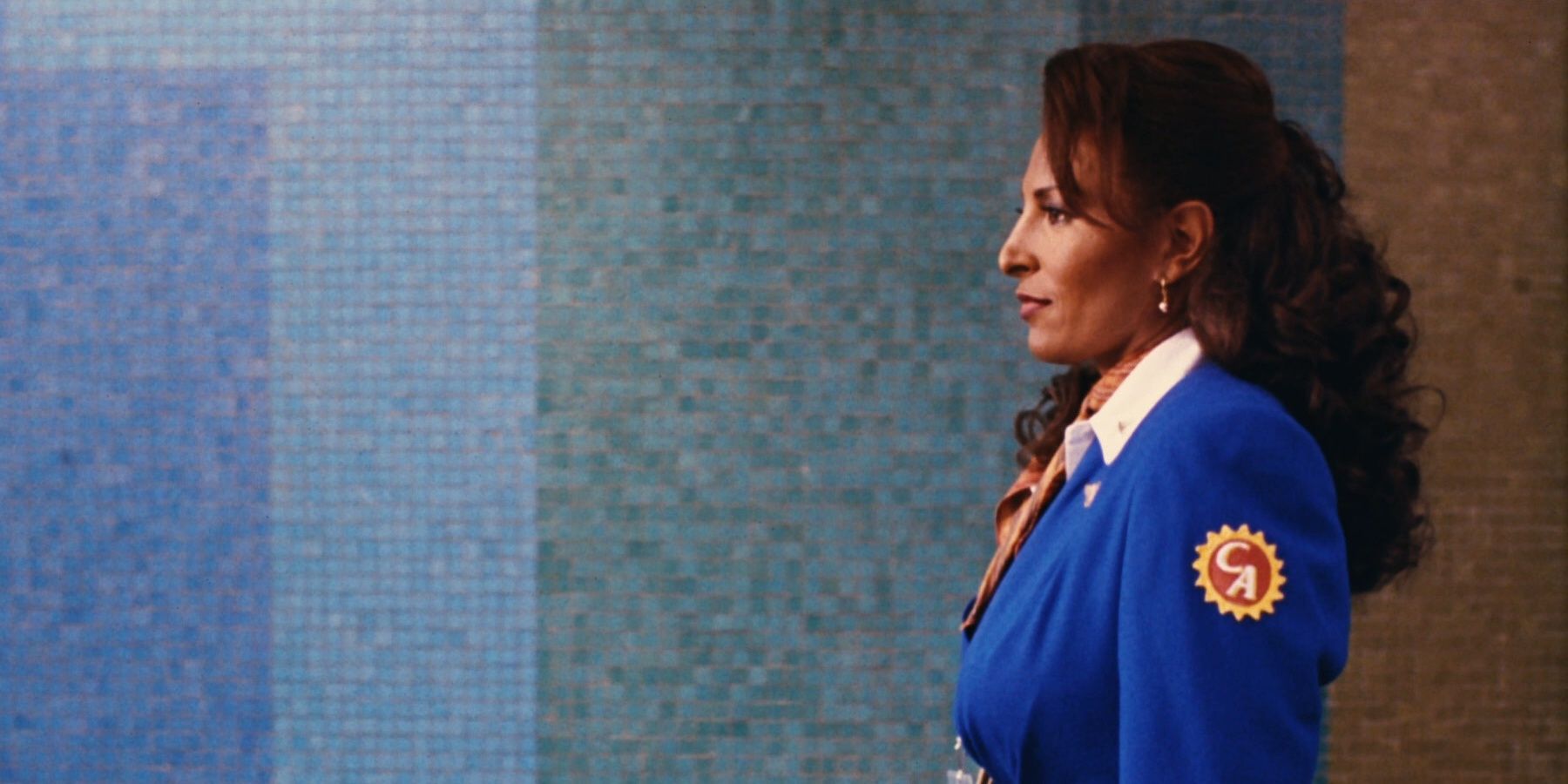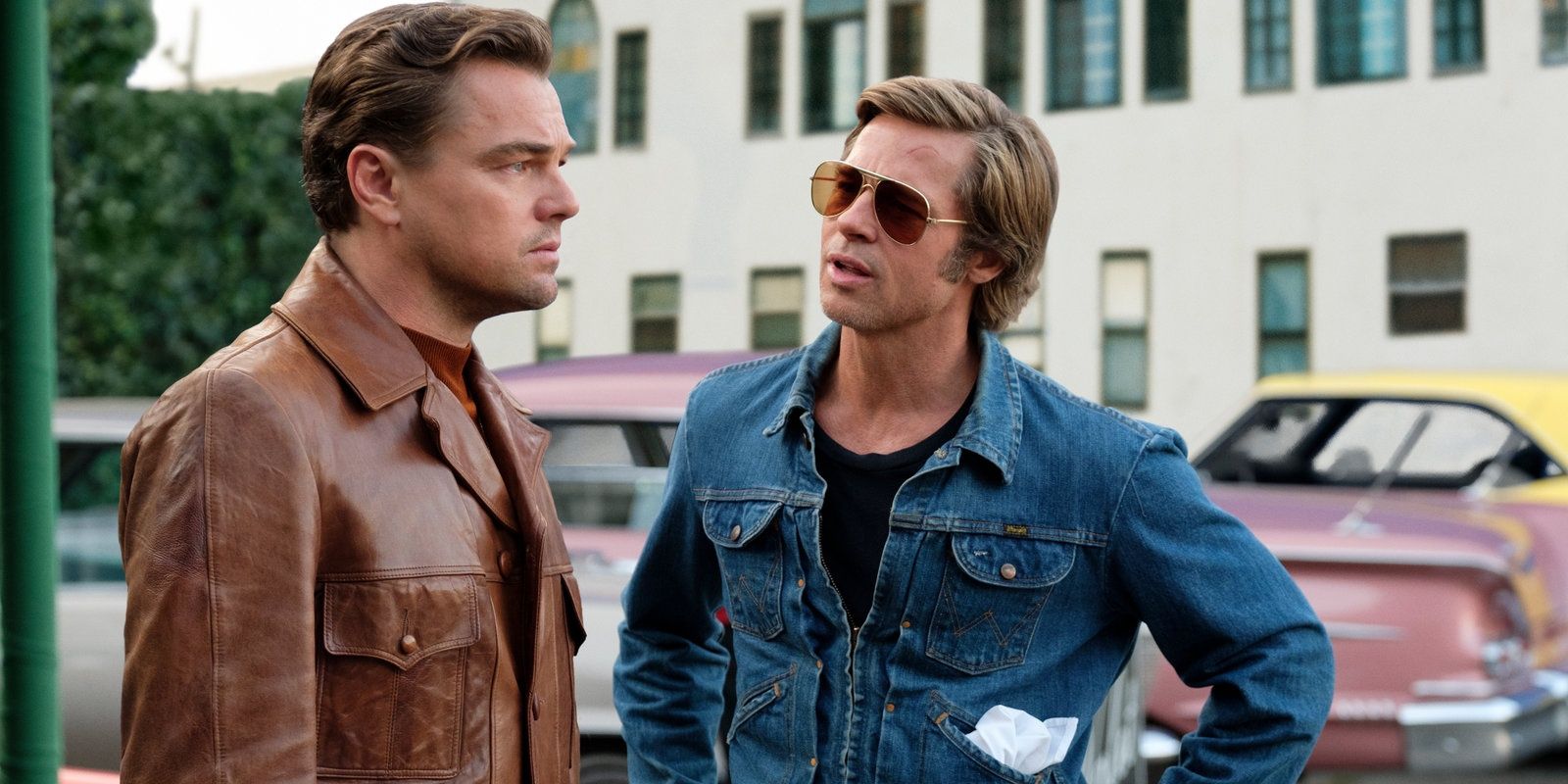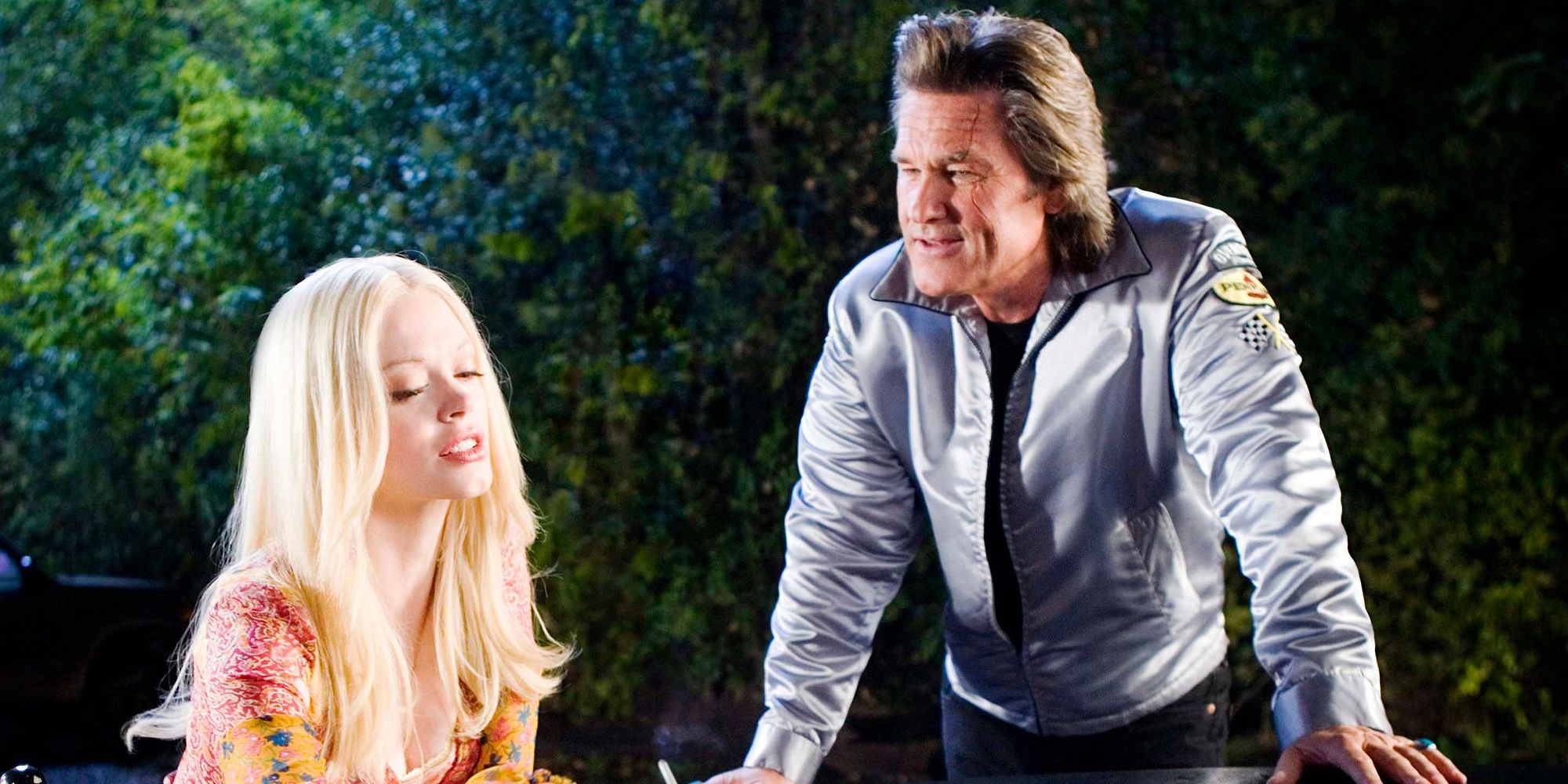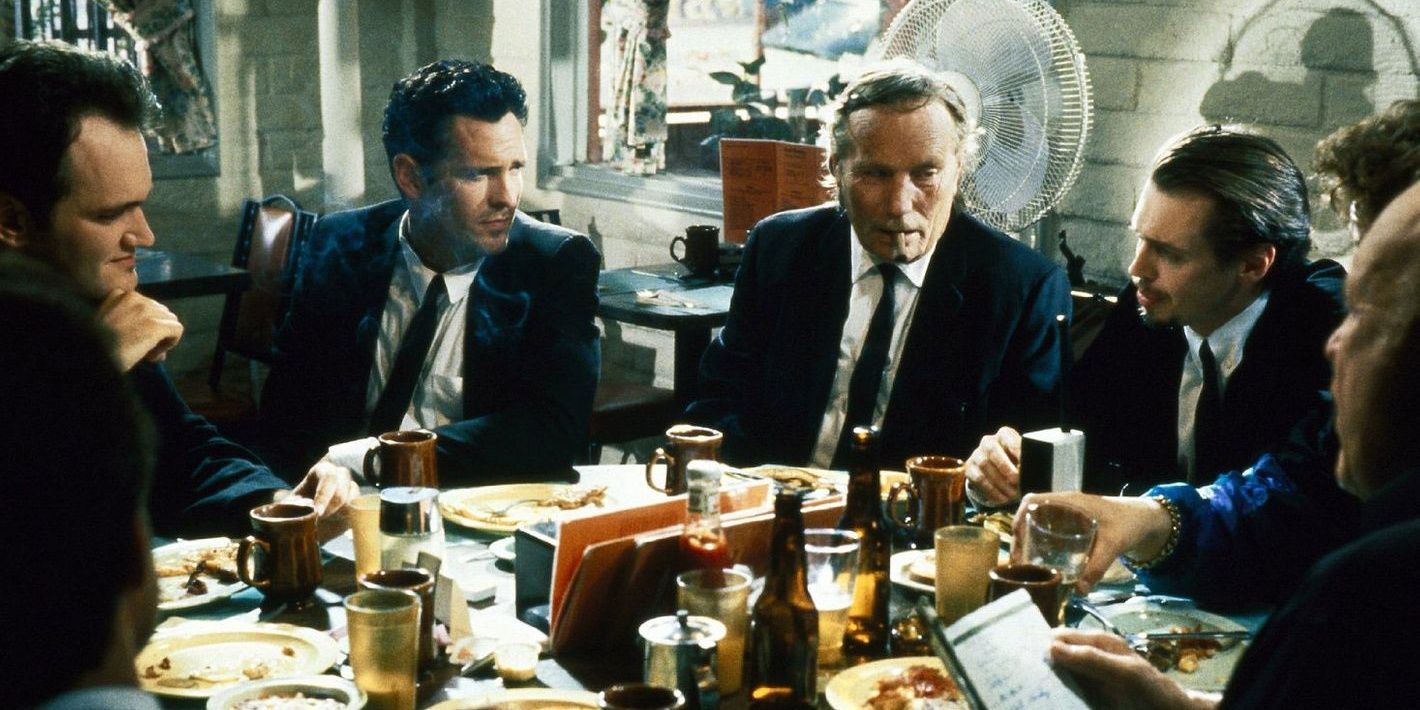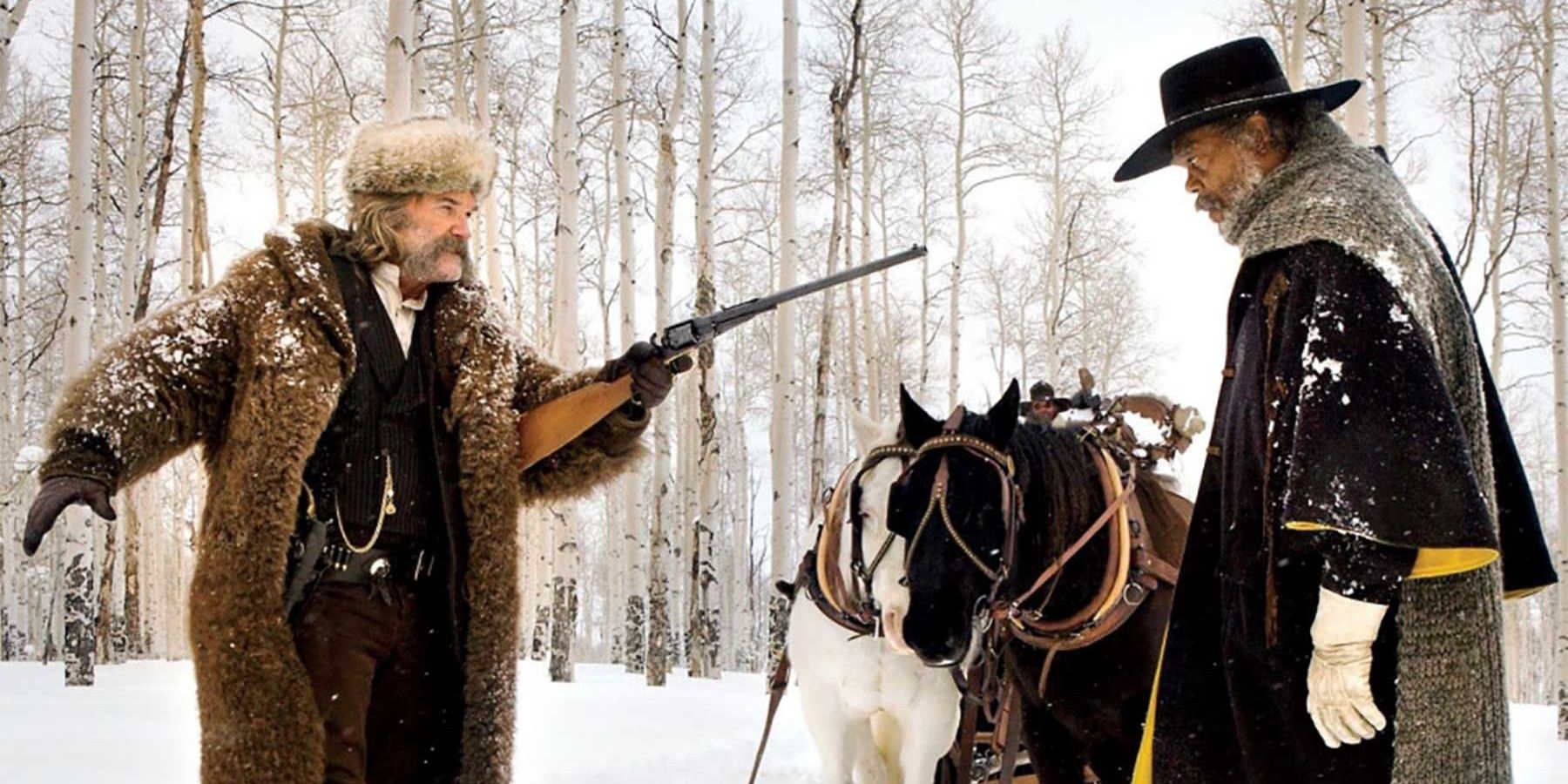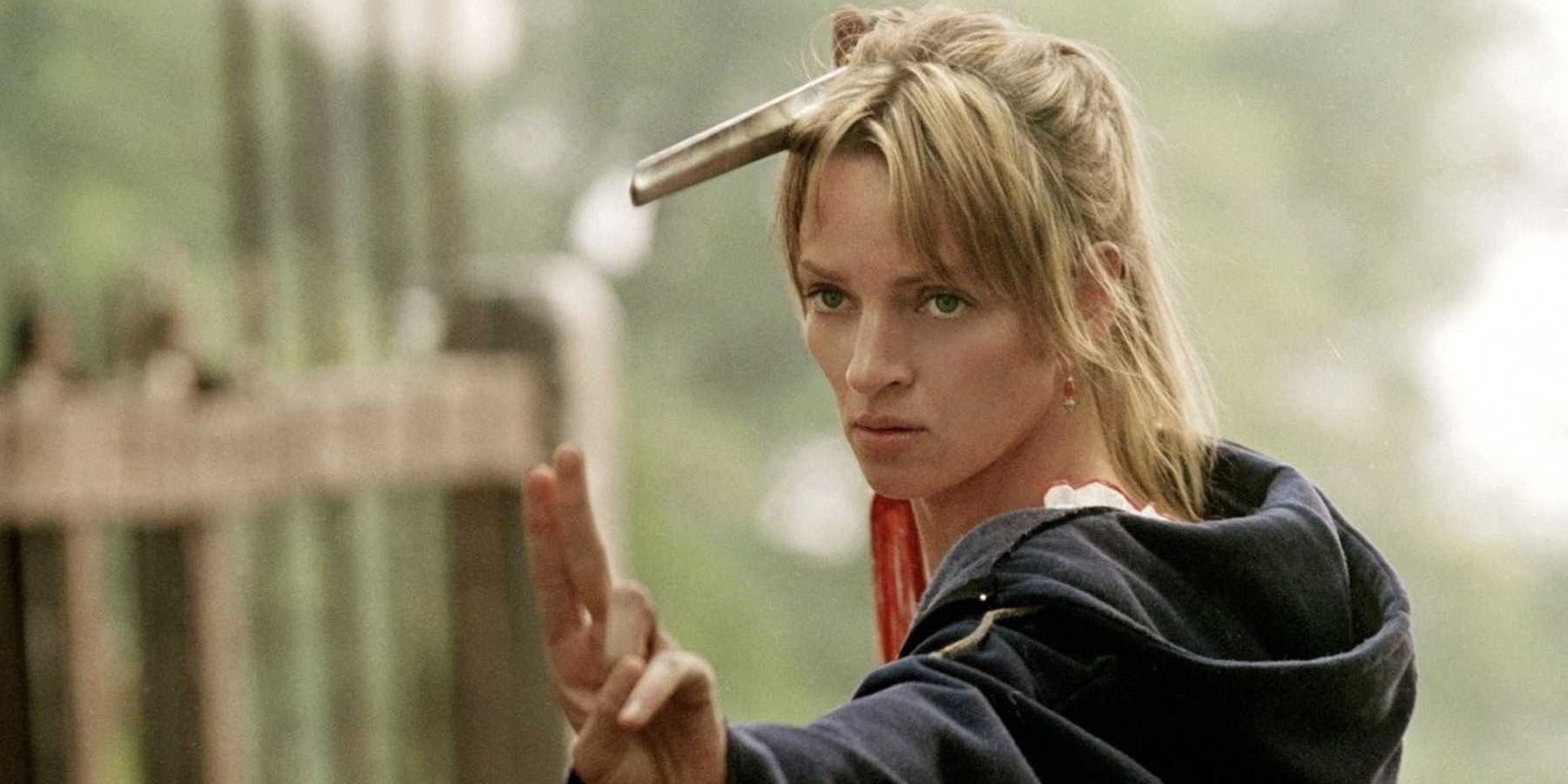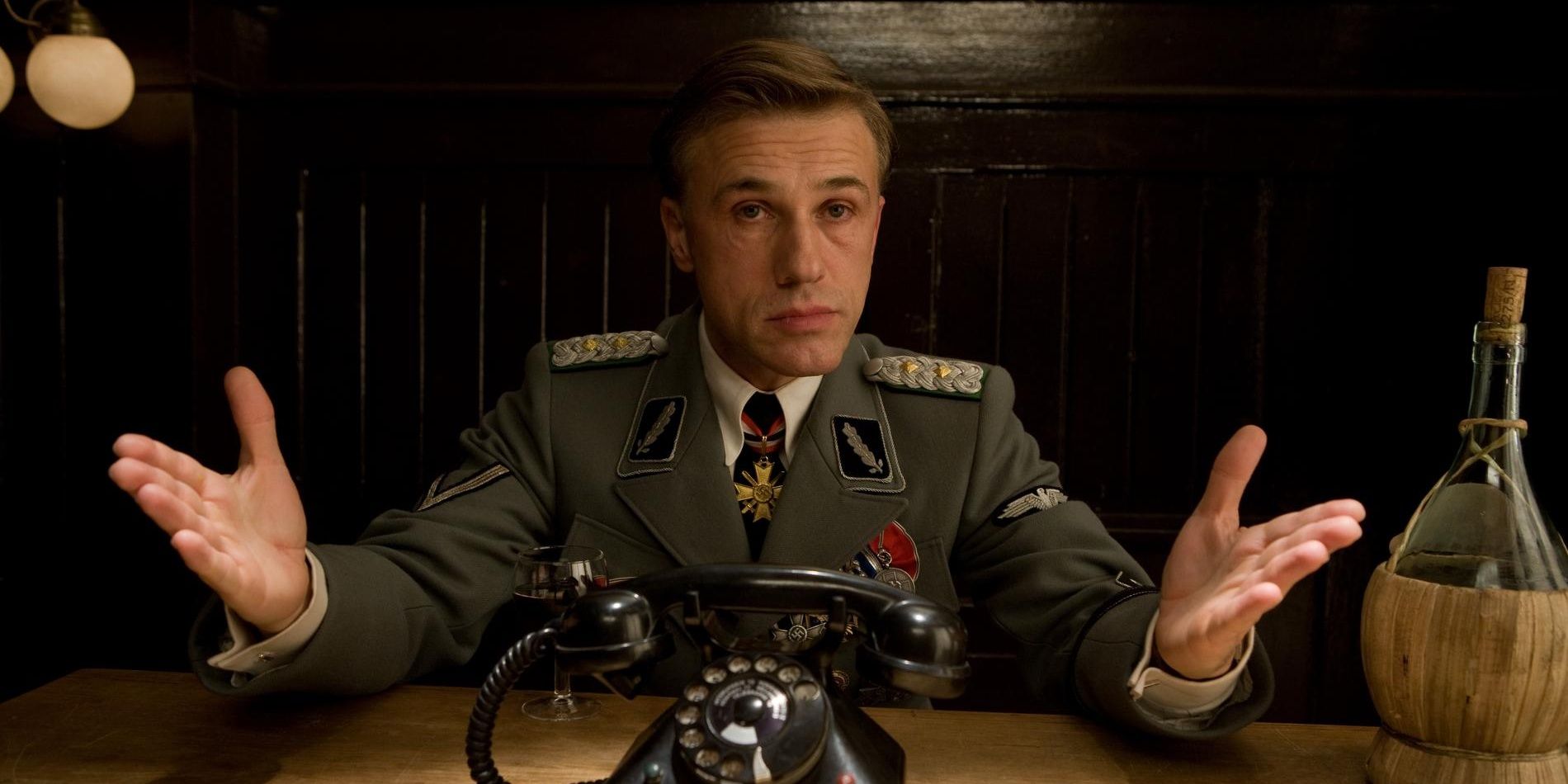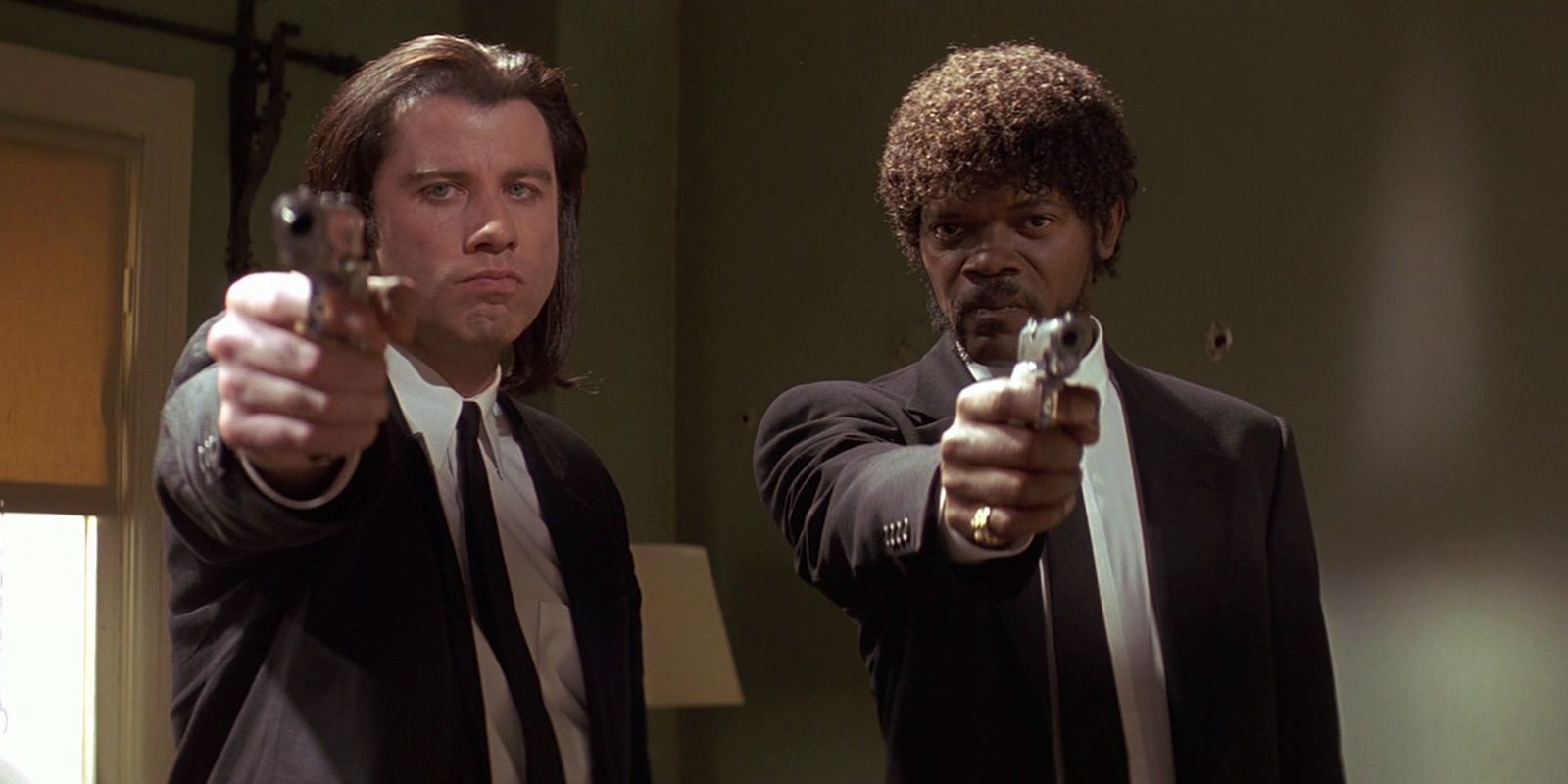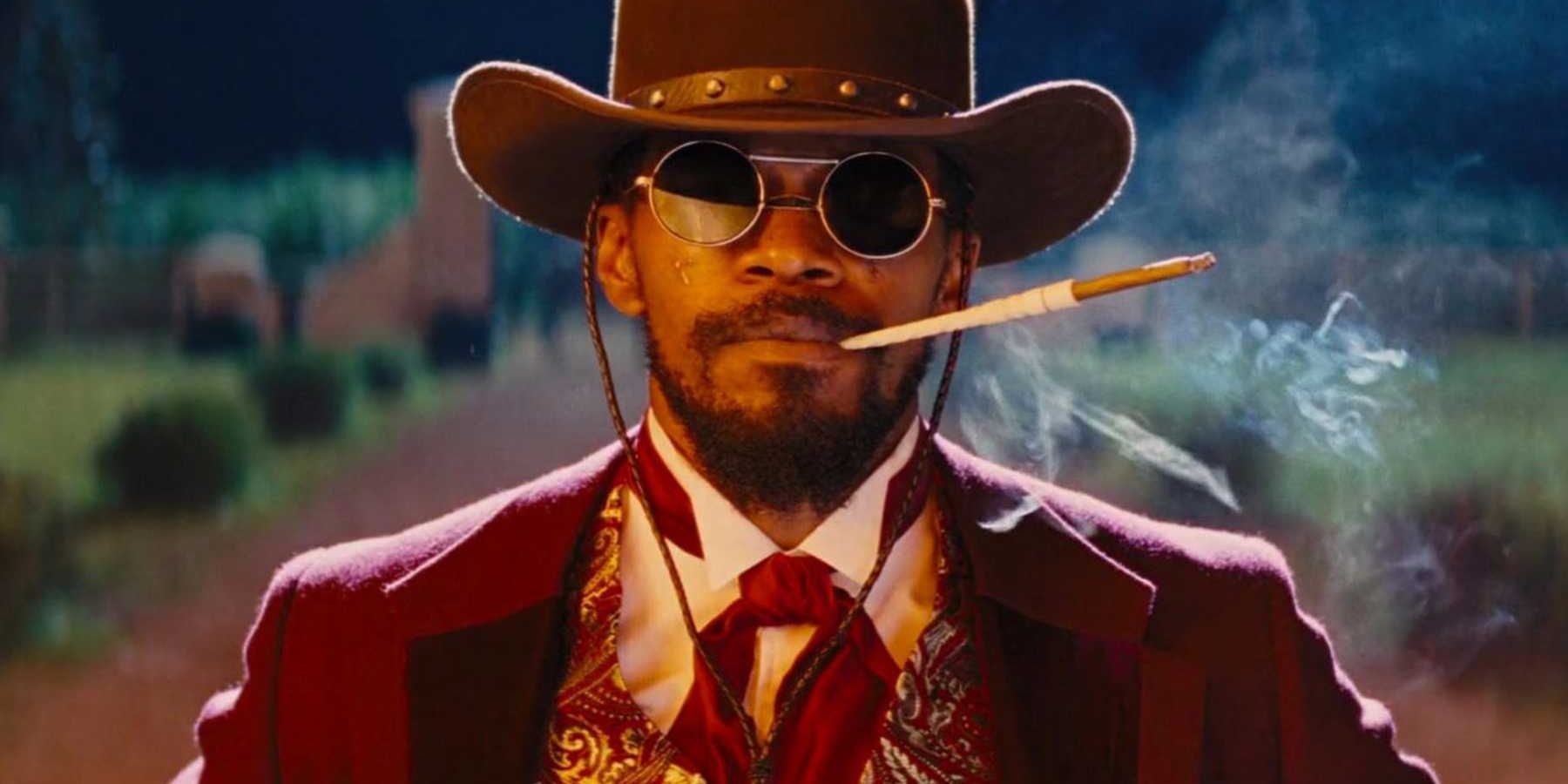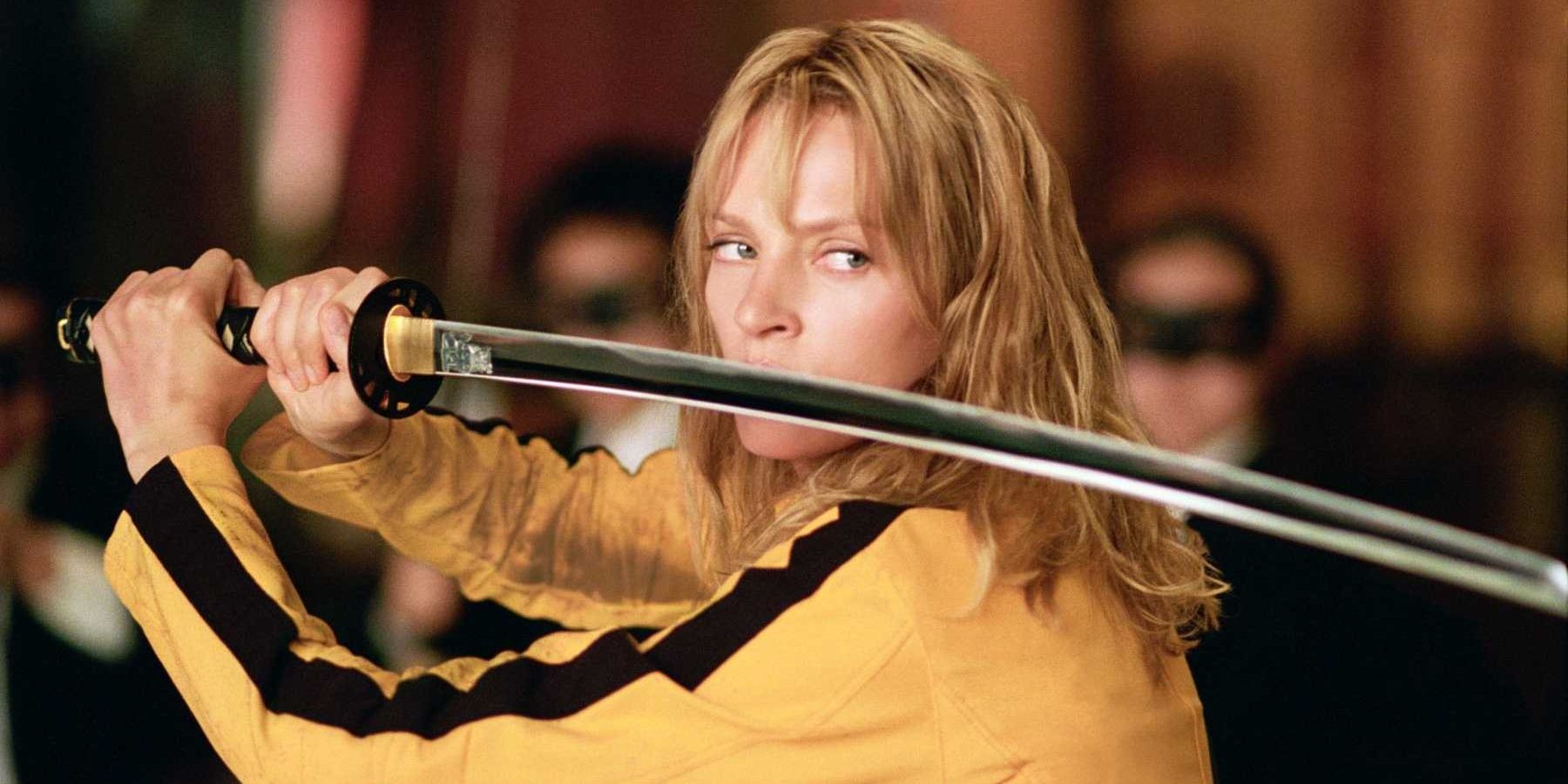Iconic writer-director Quentin Tarantino has many signature trademarks that make his films instantly identifiable. Among them are lyrical dialogue, eccentric characters, and, of course, explosive violence. Sometimes his violence is disturbingly realistic, and sometimes it's so over-the-top that it's deliberately sensationalistic. In either case, his violent scenes are always effective in creating visceral thrills and strong reactions.
Of course, some of Tarantino's films are more violent than others. Certain subjects lend themselves to constant action, whereas other films of his are slower burns that are more character and dialogue-driven. Here are all of his directorial efforts, ranked from least to most violent.
Jackie Brown (1997)
After Tarantino's breakout hit Pulp Fiction established him as one of the most important filmmakers of his generation, his follow-up was highly anticipated. Tarantino adapted Elmore Leonard's novel Rum Punch into his third film, Jackie Brown, about a drug-smuggling flight attendant who outsmarts both her crime boss and the authorities and comes away with half a million dollars in cash. There are acts of violence committed throughout the film, but none are particularly graphic, and the film is more a dialogue-driven character study than anything else.
Once Upon A Time In Hollywood (2019)
Tarantino's latest film is the story of a Hollywood actor and his longtime stunt double navigating the waning days of their careers in the summer of 1969. The events of the film are set against the backdrop of the Manson murders, and Sharon Tate, one of Manson's real-life victims, is a character in the film as well.
These parallel stories collide in the film's third act, combining alternate history with lots of blood and gore. When Once Upon a Time in Hollywood gets violent, it's a bloody mess. Most of the film, however, is a drama-comedy with no violence at all.
Death Proof (2007)
Released theatrically as part of a double feature in the ill-fated Grindhouse project, Death Proof is described as a slasher film in which the killer's weapon is his car - a "death proof" stunt vehicle that he uses to murder his victims. Kurt Russell plays Stuntman Mike, who has success in the first half of the movie, which focuses on his first set of victims.
He meets his match in the second half, however, when he picks the wrong group of girls to mess with. The first set of kills in Death Proof is quite graphic and shown repeatedly from multiple angles. The final sequence isn't nearly as bloody, but raucous nonetheless.
Reservoir Dogs (1992)
Tarantino's debut film, Reservoir Dogs, about an undercover cop infiltrating a heist that goes horribly wrong, is mostly a chamber piece that's driven by the tense dialogue and the prevailing threat of violence that hangs over each frame. As for violent scenes, there aren't very many, but the ones that are shown are quite bloody. This includes the post-opening titles scene, which takes place well into the story’s chronology, the infamous "ear" scene, and of course, the Mexican standoff at the end.
The Hateful Eight (2015)
2015's The Hateful Eight, like Reservoir Dogs, takes place mostly in one location: a secluded cabin in the Wyoming wilderness, where eight strangers are forced to spend the night and wait out a blizzard. All of these characters harbor dark secrets, which come to light in explosive fashion in the film's second half.
The Hateful Eight is a mean film about mean people who do mean things to each other, and the violence is, well, pretty mean. Some of it is effectively realistic, and some of it borders on cartoonish. All of it is quite bloody.
Kill Bill: Volume 2 (2004)
The second installment of Tarantino's revenge odyssey, Kill Bill, is significantly less violent than the first, which is more of a testament to how bloody volume one is than anything else. Kill Bill: Volume 2 finds characters buried alive, bitten by venomous snakes, having their eyes gouged out, and more.
The fight scenes are brutal and graphic, making The Bride's journey all the more heroic in the end. Her final confrontation with Bill himself, is ironically, the least violent confrontation in either of the Kill Bill films.
Inglourious Basterds (2009)
After the underwhelming response to Death Proof, Tarantino felt tremendous pressure to rebound with a hit. Inglourious Basterds is his acclaimed alternate history World War II epic about a group of Nazi-hunting soldiers who partner with a movie theater owner to capture and kill the leaders of the Nazi regime.
It's at once a war film, a detective story, and a love letter to classic cinema. It's also extremely violent throughout, as would be expected from a Tarantino war story.
Pulp Fiction (1994)
1994's landmark masterpiece Pulp Fiction is an anthology of three L.A. crime stories, told in jumbled chronological order. Characters from each chapter overlap and appear in other segments of the film, making Pulp Fiction a wildly creative movie. The violence in Pulp Fiction isn't necessarily the bloodiest in his filmography, but it's by far the most depraved. In one scene, characters are forced to clean skull and brain matter out of their car in the middle of the day. In another, Bruce Willis rescues the local crime boss from the basement of a pawn shop, where he's suffering an unspeakable fate. Pulp Fiction shocked audiences worldwide upon its release and still holds up as Tarantino's boldest and best film to date.
Django Unchained (2012)
The violence in Django Unchained was the source of great controversy upon its release, which happened in the immediate aftermath of the horrific Sandy Hook school shooting. There's a scene towards the end where Django, a freed slave, guns down numerous people in a highly stylized sequence that many critics felt glorified gun violence at exactly the wrong time.
In addition to the shootout scene, the film contains horrific depictions of slavery which include dog attacks, brutal beatings, and, most disturbingly, a "Mandingo" fight where two slaves are forced to battle to the death with their bare hands for their owner's entertainment.
Kill Bill: Volume 1 (2003)
The first half of the Kill Bill saga is by far the most violent film in Quentin Tarantino's body of work. It is savagely bloody from beginning to end. The Bride's escape from the hospital involves biting a man's jugular vein and slicing the achilles tendon of another before slamming his head in a doorway until he dies. Then there's the swordplay towards the end which is rife with beheadings and severed limbs, and finally, the scalping of O-Ren Ishii.
Most violent of all, however, is the disturbing anime sequence that tells the tragic origin story of O-Ren Ishii, whose parents are murdered by a Yakuza boss. The sequence is incredibly bloody and cruel. Even for a Tarantino film, Kill Bill: Volume 1 stands out as particularly brutal.

